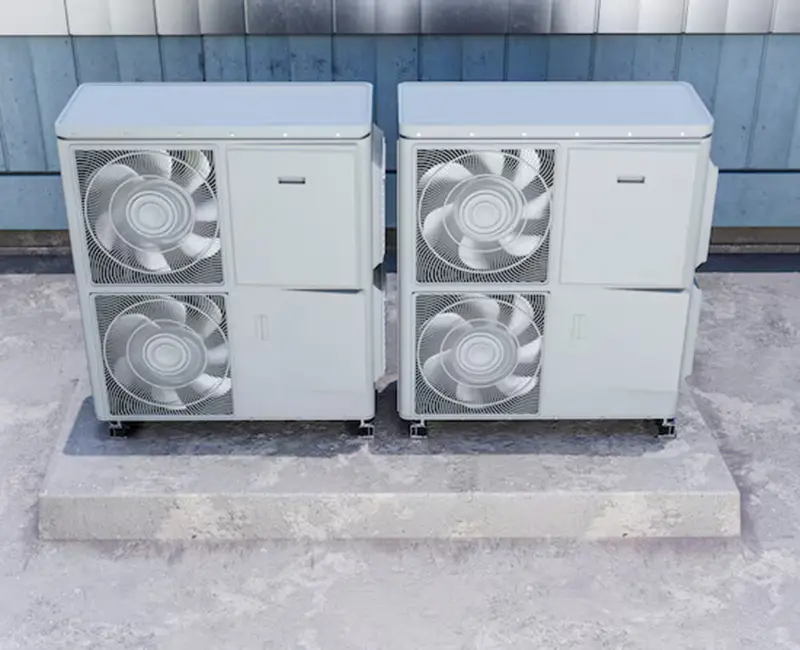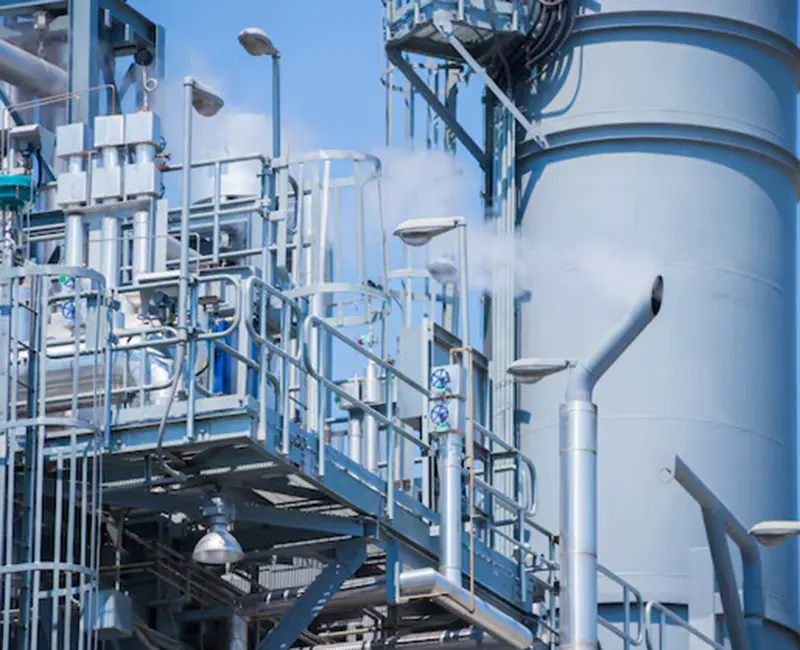How Does the Design of Copper Tube Copper Fin Heat Exchangers Enhance Heat Transfer

Copper tube copper fin heat exchangers combine copper's exceptional thermal conductivity with fins that maximize surface area for heat transfer. Copper, with a thermal conductivity of 231 Btu/(hr-ft-F), surpasses most metals, including aluminum and stainless steel, in heat transfer efficiency. This design supports industries like HVAC and refrigeration, where the global market is projected to grow from $2.5 billion in 2023 to $4.8 billion by 2032. Companies like senjun, a leader in producing copper fin heat exchangers, cater to diverse applications, including refrigerators, medical equipment, and dehumidifiers.
Key Takeaways
- Copper tube copper fin heat exchangers move heat quickly using copper's excellent ability to conduct heat. This makes them great for HVAC and cooling systems.
- The fins on the copper tubes add more surface area. This helps absorb and release heat better, keeping temperatures steady in many uses.
- These heat exchangers last a long time and resist rust. They work well in tough places like medical machines and food storage.
What Are Copper Tube Copper Fin Heat Exchangers?
Definition and Purpose
Copper tube copper fin heat exchangers are specialized devices designed to transfer heat efficiently between two mediums. These exchangers consist of copper tubes with fins attached, which enhance heat transfer by increasing the surface area. Their primary purpose is to manage temperature in various systems, such as HVAC, refrigeration, and medical equipment. For example, in HVAC systems, they regulate air temperature by allowing hot or cold air to flow over the fins, ensuring efficient heating or cooling. This design makes them indispensable in industries requiring precise temperature control.
Key Components: Copper Tubes and Fins
The structure of copper tube copper fin heat exchangers revolves around two critical components: copper tubes and fins. Copper tubes act as conduits for fluid flow, leveraging copper's high thermal conductivity to facilitate rapid heat exchange. The fins, attached to the tubes, significantly increase the surface area, enabling efficient heat dissipation or absorption. As fluid flows through the tubes, heat transfers to or from the fins, ensuring optimal performance. This combination of components allows these exchangers to excel in applications like refrigeration systems, ice makers, and dehumidifiers. Companies like senjun specialize in manufacturing these advanced heat exchangers, catering to diverse industrial needs.
Why Copper Is the Material of Choice
Copper stands out as the preferred material for these heat exchangers due to its exceptional thermal and physical properties. With a thermal conductivity of approximately 398 W/m·K, copper surpasses materials like aluminum and stainless steel in heat transfer efficiency. Its excellent corrosion resistance ensures durability, even in systems handling fluids. Additionally, copper's malleability allows it to be shaped into complex designs without compromising strength. These attributes make copper tube copper fin heat exchangers not only efficient but also reliable for long-term use. Senjun leverages copper's unique properties to produce high-quality heat exchangers for applications ranging from medical ultra-low temperature refrigerators to display cabinets.
How Does the Design Enhance Heat Transfer?

Copper’s High Thermal Conductivity
Copper’s exceptional thermal conductivity is the cornerstone of its effectiveness in heat exchangers. Its unique atomic structure, characterized by free electrons, allows heat to transfer rapidly and evenly. With a thermal conductivity of approximately 401 W/m·K, copper outperforms materials like steel, which has a conductivity of only about 50 W/m·K. This high conductivity ensures that heat moves efficiently from the fluid inside the copper tubes to the external fins. Even at elevated temperatures, copper maintains its superior performance, making it ideal for applications requiring consistent heat transfer. At senjun, we leverage copper’s properties to manufacture advanced copper tube copper fin heat exchangers, ensuring optimal energy efficiency across industries.
The Role of Fins in Increasing Surface Area
Fins play a pivotal role in enhancing the heat transfer capabilities of copper tube copper fin heat exchangers. By attaching fins to the copper tubes, the surface area available for heat exchange increases significantly. These fins, often made of copper or aluminum, are evenly spaced to ensure uniform heat distribution. As fluid flows through the copper tubes, heat transfers to the fins, where it dissipates into the surrounding medium through convection. This design not only accelerates the heat transfer process but also ensures consistent performance. For example, in refrigeration systems, this mechanism helps maintain stable temperatures, which is critical for food storage and medical applications.
Efficient Heat Absorption and Dissipation
The design of copper tube copper fin heat exchangers ensures efficient heat absorption and dissipation through a continuous cycle. First, the fluid inside the copper tubes absorbs or releases heat, depending on the system’s requirements. The high thermal conductivity of copper facilitates rapid heat transfer to the fins. Next, the fins amplify this process by increasing the surface area, allowing heat to dissipate efficiently into the surrounding environment. This cycle operates seamlessly, maintaining stable temperatures in systems like HVAC units and medical refrigerators. Senjun’s expertise in producing these heat exchangers ensures reliable performance, meeting the demands of industries that require precise temperature control.
Benefits and Applications of Copper Tube Copper Fin Heat Exchangers

High Efficiency and Compact Design
Copper tube copper fin heat exchangers excel in efficiency due to copper's superior thermal conductivity. With a conductivity of 400 W/m·K, copper outperforms materials like aluminum and stainless steel, ensuring rapid heat transfer. This efficiency allows systems to reach and maintain desired temperatures faster, reducing energy consumption and operational costs.
The compact design of these heat exchangers makes them ideal for industries with space constraints. For example, HVAC systems and refrigeration units benefit from their small footprint, which fits seamlessly into tight spaces. This feature is particularly advantageous in processing plants where space is limited, yet high-performance heat transfer is essential.
Durability and Corrosion Resistance
Copper's durability and corrosion resistance make it a reliable choice for heat exchangers. It withstands varying environmental conditions and temperature fluctuations, ensuring long-term performance. Copper also resists corrosion in fluid-based systems, reducing maintenance needs and extending the lifespan of the equipment. Additionally, its antimicrobial properties prevent bacterial growth, contributing to cleaner systems and lower maintenance costs. These attributes are critical in applications like medical refrigerators and dehumidifiers, where reliability is paramount.
Applications Across Industries (HVAC, Refrigeration, Medical Equipment)
Copper tube copper fin heat exchangers find applications across diverse industries due to their efficiency and versatility.
| Application Area | Advantages |
|---|---|
| HVAC Systems | Efficient heating, cooling, and dehumidification due to superior thermal conductivity. |
| Food Storage | Antimicrobial properties ensure hygiene; high thermal conductivity improves energy efficiency. |
| Industrial Cooling | Unmatched reliability and efficiency in demanding processes like power plants and chemical industries. |
| Medical Equipment | Ideal for ultra-low temperature refrigerators and cryogenic coolers due to thermal efficiency. |
These exchangers are indispensable in sectors requiring precise temperature control and energy efficiency.
senjun’s Contribution to Heat Exchanger Innovation
Senjun, a leader in heat exchanger technology, has made significant advancements in this field. The company uses high-quality copper alloys and optimized aluminum fins to enhance heat transfer and durability. Precision laser welding techniques improve product longevity while reducing energy consumption. Senjun also prioritizes eco-friendly designs, minimizing refrigerant usage and exploring natural refrigerants to align with sustainability goals.
Their customizable fin spacing and precise hole pitches cater to diverse industry demands, ensuring optimal performance in applications like refrigerators, medical ultra-low temperature refrigerators, and ice makers. Senjun’s commitment to innovation and quality makes them a trusted partner for industries worldwide.
The design of copper tube copper fin heat exchangers sets a high standard for heat transfer efficiency. Copper’s exceptional thermal conductivity ensures rapid heat exchange, while the fins amplify this process by increasing the surface area. This combination delivers measurable benefits:
- Quick heat transfer due to copper’s superior conductivity.
- Enhanced durability and longevity, even in demanding industrial environments.
In these exchangers, fluids flow through copper tubes, transferring heat to the fins, which dissipate it efficiently into the surrounding medium. This mechanism ensures reliable performance across applications like refrigeration and HVAC systems. At senjun, we specialize in crafting advanced copper tube copper fin heat exchangers. Our products, designed for refrigerators, medical equipment, and more, reflect our commitment to innovation and quality.
FAQ
What makes copper tube copper fin heat exchangers more efficient than other designs?
Copper's high thermal conductivity and the fins' increased surface area ensure rapid heat transfer. At senjun, we optimize these features for maximum efficiency.
How does senjun ensure the durability of its heat exchangers?
We use high-quality copper and aluminum materials. Our advanced manufacturing techniques, like precision laser welding, enhance product longevity and reduce maintenance needs.
Can copper tube copper fin heat exchangers be customized for specific applications?
Yes, senjun offers customizable designs. We adjust fin spacing and tube configurations to meet the unique requirements of industries like medical refrigeration and HVAC systems.


















